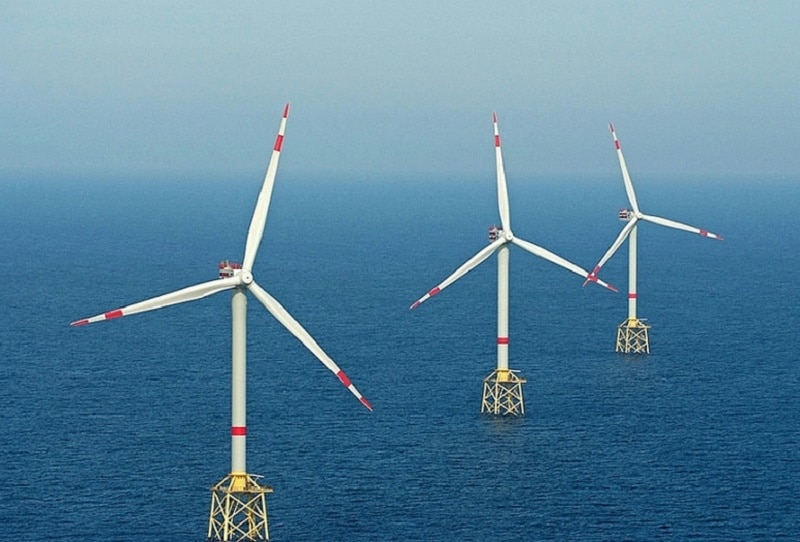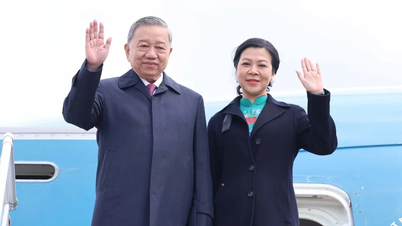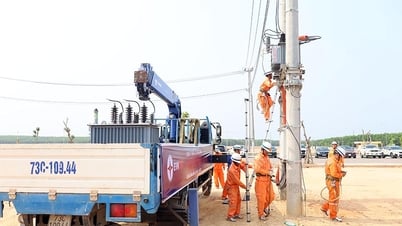Offshore wind power will soon have specific policies to create 55,000 new jobs
The report “Offshore wind power supply chain for Vietnam's rapid development scenario” published by the Norwegian Embassy in Vietnam and presented to the Ministry of Industry and Trade provides many useful assessments and recommendations.
The government needs comprehensive and detailed guidance.
According to the Report, Vietnam’s offshore wind market is considered promising, with world-leading wind speeds and favorable seabed conditions. The supply chain currently used by the domestic oil and gas industry, combined with existing onshore and nearshore wind infrastructure, has the potential to support the development of the domestic offshore wind sector.
In addition, recent orders for offshore wind power structural components from international markets signal a promising start for Vietnam to become an offshore wind power hub in the Asia-Pacific.
Given its favorable location in the Asia-Pacific region, maritime transport and port infrastructure, Vietnam also has the potential to become a supply chain hub for offshore wind power structure components, especially in the fields of jacket foundation processing; tower manufacturing; turbine nacelle assembly.
 |
| The Power Plan VIII targets 6,000 MW of offshore wind power by 2030, however, the Pilot Research Project on offshore wind power development to serve domestic electricity demand developed by the Ministry of Industry and Trade shows that by 2030, no MW from this power source will be added to the system. |
“However, through interactions with suppliers, we understand that suppliers are hesitant to expand their current capacity due to the unclear roadmap of current projects and are largely driven by the Government’s desire to promote offshore wind. If this situation changes, suppliers will be willing to invest, expand capacity and support the market, initially the domestic market,” the report said.
Also to promote and further develop the domestic supply chain, the Report has made a series of specific recommendations.
That is, improving the offshore wind power policy framework through the National Assembly needing to enact laws or instruct competent authorities to build a strong, clear and solid legal framework for offshore wind power.
Next is to build a clear implementation plan, in which the time aspect absolutely cannot be exaggerated, because this is a necessary factor for financial and investment planning.
This is accompanied by the development of investment incentives. Accordingly, the Government should implement a transparent pricing scheme, providing investors with clear information on expected price adjustments – regardless of the price structure. The introduction of a profitable Power Purchase Agreement (PPA) mechanism is also expected to attract international finance.
On the issue of enhancing access to finance, the Report argues that government support, including capital subsidies, tax exemptions and preferential loans for domestic small and medium enterprises, will create a competitive supporting industry, reducing investment costs for sustainable energy solutions.
Another important point is to streamline the Power Purchase Agreement (PPA) templates in order to make PPA negotiations more efficient to reduce costs for investors. Relevant government agencies are recommended to reduce the time required to develop guidelines and regulatory approvals, which can take years in some cases. Lack of clarity and delays in granting approvals often lead to delays in implementation or complete abandonment of projects.
“Once such policies are in place, the domestic supply chain will be ready to invest and expand its capacity further. Offshore wind-related manufacturing facilities in Vietnam will need to be upgraded to support emerging demand,” the report noted.
In addition, according to the Report's assessment, to meet the needs of the hypothetical scenarios; in the commercial operation time scenarios in 2030 and 2035, it is necessary to consider specific actions including strengthening the grid infrastructure; upgrading seaport infrastructure; and the participation of universities and industry.
Opportunity to create 55,000 new jobs
The report also assesses Vietnam's port infrastructure to determine its ability to support the logistics and operations of offshore wind projects.
Accordingly, ports in the Northern region, including those in the Hai Phong Port cluster, are showing low capacity in supporting the offshore wind power industry, requiring higher investment and longer development time.
Specifically, the limited height of many famous shipyards in the North will significantly limit the transportation of foundations.
 |
| It is estimated that approximately 55,000 jobs, direct, indirect and induced, will be created during the development of 6,000 MW of offshore wind power capacity as outlined in Power Master Plan VIII. |
Height restrictions combined with the geographical proximity to electrical component and cable manufacturers (LS-VINA Cables and Systems JSC, GE Vietnam Co., Ltd. and ABB Automation and Electrification (Vietnam) Co., Ltd.) make these factories ideal for developing smaller complex components such as wind turbine assembly lines (WTGs) or components for future offshore substations (OSSs).
On the other hand, these ports can also leverage their extensive shipbuilding experience to build specialized vessels for offshore wind power .
Ports in the southern region are well placed to build larger components, most likely influenced by the long-standing presence of the oil and gas industry.
One notable location is the Vung Tau Port cluster, where PTSC is pioneering offshore wind power. However, the area adjacent to the port and yard is congested due to oil and gas activities in Vung Tau, which may hinder the consolidation of activities for future development.
Thi Vai port cluster can also serve as a manufacturing and assembly hub due to the presence of large manufacturing facilities for wind turbines and large steel foundations (CS Wind and SREC). In the future, this port cluster also has the potential to develop single foundation production.
To promote the development of domestic supply chain capacity, southern ports need to continue to develop their foundation and pier manufacturing capacity. Vung Tau ports need to coordinate their actions to improve their capacity and efficiency in using facilities. Coordination between ports in different activities is essential and allows for the optimization of logistics operations, ensuring the seamless implementation of projects.
Domestic suppliers were also analyzed to assess their potential to support offshore wind projects based on their existing capabilities and willingness to support projects that rely heavily on this type of infrastructure.
The supplier assessment indicated that Vietnam’s current foundation and pier manufacturing capacity can meet the specific requirements of offshore wind . However, as domestic and therefore regional demand is expected to increase, the current infrastructure will not be able to meet the supply of key components such as WTG blades and casings.
The main reason is that the original equipment manufacturers for WTG have not yet confirmed plans to set up such manufacturing facilities in Vietnam.
Suppliers acknowledge that their investment decisions are closely linked to the development of the offshore wind market in Vietnam, which needs to be secured by a consistent project roadmap, which is also the foundation for the development of the domestic offshore wind supply chain and infrastructure.
Another important factor that could contribute to the development of the domestic supply chain is the completion of a specific legal framework for offshore wind power . However, Vietnam, as of the time of this report (October 2023), has not yet established such a legal framework, leading to investors being reluctant to cooperate with domestic suppliers and commit to investing in domestic infrastructure.
It is worth noting that as the offshore wind sector continues to grow, the potential for direct, indirect and induced employment will increase. It is estimated that approximately 55,000 jobs, direct, indirect and induced, will be created during the development of the 6 GW of offshore wind capacity as outlined in the Power Plan VIII.


![[Photo] Prime Minister Pham Minh Chinh receives Swedish Minister of International Development Cooperation and Foreign Trade](https://vphoto.vietnam.vn/thumb/1200x675/vietnam/resource/IMAGE/2025/5/12/ae50d0bb57584fd1bbe1cd77d9ad6d97)
![[Photo] Prime Minister Pham Minh Chinh works with the Standing Committee of Thai Binh Provincial Party Committee](https://vphoto.vietnam.vn/thumb/1200x675/vietnam/resource/IMAGE/2025/5/12/f514ab990c544e05a446f77bba59c7d1)

![[Photo] Prime Minister Pham Minh Chinh starts construction of vital highway through Thai Binh and Nam Dinh](https://vphoto.vietnam.vn/thumb/1200x675/vietnam/resource/IMAGE/2025/5/12/52d98584ccea4c8dbf7c7f7484433af5)






















































































Comment (0)